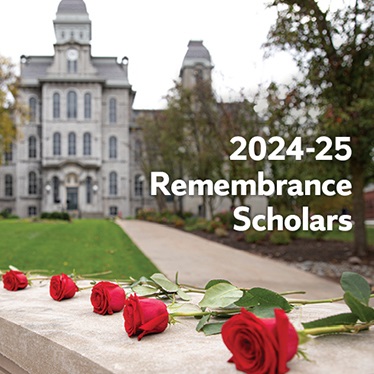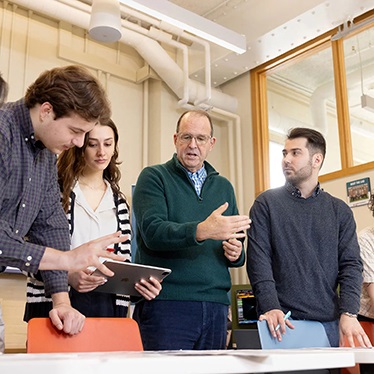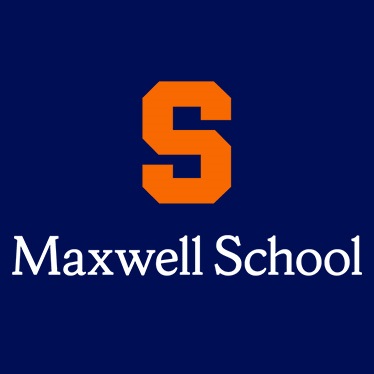Slow Archaeology
August 6, 2019
This anthropology conference was creative, playful, and welcoming to the Maxwell students who helped make it go.
In early May, the foyer outside Maxwell Auditorium was full of unexpected sights: a column made of historic Hudson Valley bricks and sheep’s wool; a cabinet of heirloom seeds; remnants from shipwrecks; photographs of archaeologists sieving deposits in Tasmania; and ornaments found on sidewalks, elevators, subways, and elsewhere in New York City. The occasion for these exhibits was a unique annual conference known as TAG — Theoretical Archaeology Group — that drew several hundred scholars from across North America as well as Iceland, the United Kingdom, Chile, Australia, and parts of Scandinavia.

This year’s theme, developed by Maxwell’s anthropology department, was Slow Archaeology, but the response to the conference was anything but slow. TAG Syracuse drew double the expected attendance, and an extra day of sessions was added to accommodate it. An array of artists, too, responded to the conference’s call for artwork connected with the theme, leading to the exhibits in common areas of Maxwell and Eggers.
“We were caught a bit off guard, but we’re excited about the turnout and the quality of papers and sessions submitted,” says conference chair Guido Pezzarossi, assistant professor of anthropology. “It’s really diverse and creative.” The agenda for TAG is very different from a typical, highly formal academic conference. “I would characterize it as a playful conference,” says Maxwell bioarchaeologist Shannon Novak. “It embraces a collegial atmosphere and encourages people to bring ideas that they’re starting to think about.”
TAG also embraces emerging scholars, and so the department invited graduate students to help plan the event. “It is very much the nature of TAG to be collaborative and involve students as much as possible,” says Novak. “It gives them an opportunity not only to meet really talented scholars, but to try out their work in a space that is supportive and provides constructive criticism.”
Three doctoral students — Alanna Warner-Smith, Matthew Greer, and Sarah Platt — were co-chairs of the organizing committee and led sessions during the conference. “Having an important conference come to us in Syracuse, a conference that attracts heavy hitters in the field and some really impressive rising stars, is an amazing opportunity,” says Platt. “This is a chance to create relationships with future colleagues in the discipline.”
The conference theme of slow archaeology is informed by the broader movements of slow science and even slow food, and highlights the importance of long-term commitments to projects, relationships with descendants and other stakeholders, and collaboration. The slow approach, says Pezzarossi, advocates for “slowing down and taking into consideration what a more ethical and politically engaged archaeological practice could look like.”

An example is Shannon Novak’s Spring Street project, which she discussed in a TAG conference session. The project dates back to 2006, when Novak began examining burial remains from a 19th century church congregation in New York City. Most of the remains were reinterred in 2014, but Novak continues to work with samples and is holding some artifacts for the descendant community. “Descendants continue to pop up and introduce new stories, or we have new molecular findings that change the story,” says Novak. The slow movement, she adds, is about “not closing off either the conversation or the practices that will come next.”
Novak’s project tied in with one of the artist collaborations at the conference. In Strasser Commons was a display, coordinated by graduate students Katie Hicks and Melissa Darroch, of paintings by artist Cora Jane Glasser that were inspired by Spring Street artifacts, along-side some of the artifacts themselves.
This outside-the-box approach to presenting archaeological work is “very much in the spirit of TAG,” says Pezzarossi. “Part of what we’ve been looking to do is bridge the science/art divide, and to experiment with, ideally, more holistic and engaging ways of communicating the work that we do.”
By Jeffrey Pepper Rodgers
This article appeared in the Spring 2019 print edition of Maxwell Perspective © Maxwell School of Syracuse University. To request a copy, email maxwellperspective@syr.edu.
Related News
School News

Apr 18, 2024
School News

Apr 18, 2024
School News

Apr 17, 2024
School News

Apr 16, 2024